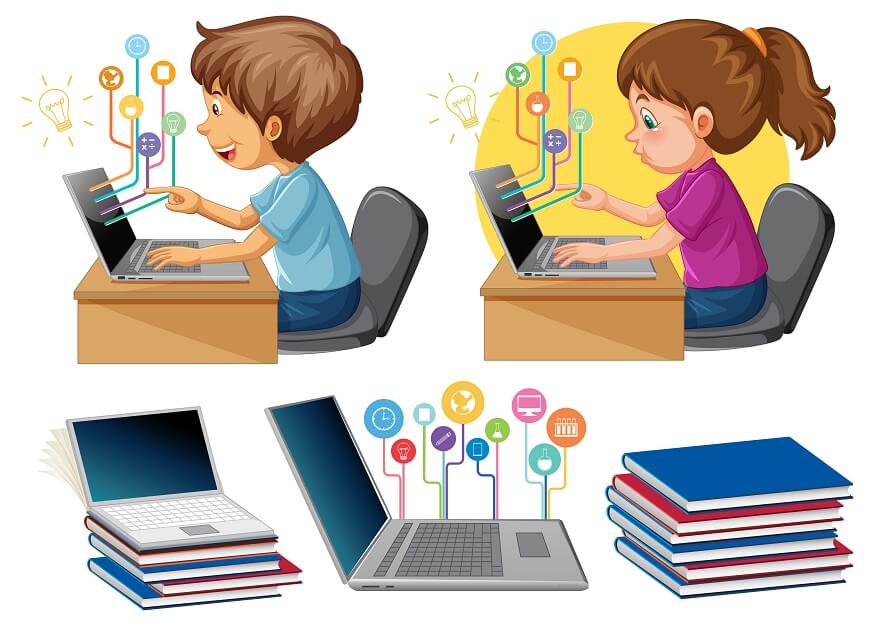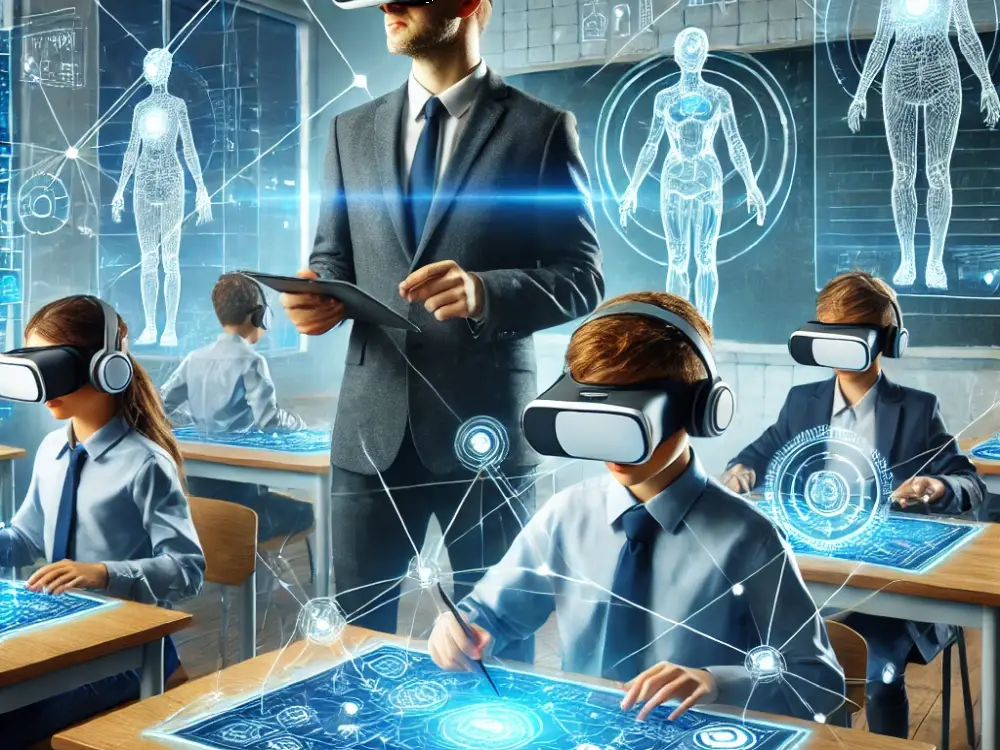The Role of Modern Technology Education in Shaping Tomorrow's Labor force: Insights for Educators
As the landscape of work remains to advance intoxicated of technological innovations, the function of innovation education ends up being progressively crucial in preparing pupils for future occupations. Educators are tasked with outfitting learners not only with technological efficiency yet also with crucial soft skills such as essential thinking and cooperation. By examining ingenious curricular approaches and promoting collaborations with industry leaders, we can better recognize how to successfully grow a workforce that satisfies the needs of a digital economic climate. What approaches can educators utilize to link the gap in between education and industry expectations?

Importance of Technology Education And Learning
In an increasingly electronic world, the relevance of technology education and learning can not be overstated. As markets evolve and incorporate advanced innovations, a versatile education in modern technology becomes necessary for both specialist and personal growth. Technology education and learning equips individuals with the abilities required to navigate the complexities of modern-day workplaces, promoting flexibility in an environment defined by quick change.
Additionally, modern technology education and learning advertises critical thinking and problem-solving skills. Make Money. By engaging with different technological tools and platforms, learners improve their capability to examine info, draw links, and establish ingenious options to real-world issues. This academic emphasis not only prepares trainees for particular professions but also cultivates a state of mind that is vital for long-lasting discovering
Furthermore, innovation education plays a vital function in connecting the digital divide. By providing fair accessibility to technological resources and training, schools equip all trainees, despite socioeconomic standing, to get involved in the digital economic climate. Finally, as we relocate better into the 21st century, prioritizing modern technology education and learning is necessary for preparing a qualified workforce with the ability of growing in a progressively interconnected and technologically driven international landscape.
Trick Abilities for Future Labor Force

Furthermore, proficiency in digital proficiency is indispensable; workers must navigate a selection of software program devices and platforms efficiently. Collaboration abilities are likewise critical, as many modern offices highlight teamwork throughout varied, typically remote, environments. Imagination and innovation will certainly be important in driving the development of brand-new solutions and items in a competitive market.
Recognizing data analytics and cybersecurity concepts is increasingly vital, showing the expanding importance of data-driven decision-making and protecting delicate details. Lastly, a fundamental understanding of expert system and equipment knowing will certainly empower future specialists to leverage these modern technologies efficiently.
Educators needs to therefore prioritize the combination of these abilities into their technology educational program, making certain students are fully equipped to fulfill the demands of a dynamic job market. By promoting these expertises, we prepare students not just for their first tasks, yet for long-lasting careers in an ever-evolving technological landscape.
Integrating Innovation in Curriculum
Incorporating modern technology right into the curriculum is important for contemporary education, with 85% of teachers acknowledging its value in boosting pupil involvement and learning outcomes. As technology remains to evolve, universities must adjust to prepare pupils for a future where electronic proficiency is extremely important. This assimilation involves not only making use of digital devices yet additionally the unification of ingenious resources that promote vital thinking, creativity, and collaboration.
A well-structured modern technology educational program need to straighten with instructional standards while resolving the varied discovering requirements of students. This can consist of a blend of on-line systems, interactive software program, and multimedia sources that accommodate different learning styles. In addition, instructors have to get adequate training to effectively carry out these innovations, ensuring that they are outfitted to assist in a technologically enriched learning atmosphere.
Furthermore, incorporating innovation right into the curriculum enables real-world applications, bridging the space between theoretical expertise and practical abilities. By involving students with immersive and relevant experiences, teachers can grow a workforce that is not only highly competent yet also adaptable and prepared to fulfill the challenges of tomorrow's job market. Highlighting modern technology in education is not merely a pattern; it is a need for shaping proficient future specialists.
Innovative Mentor Approaches
Embracing innovative mentor methods is critical for fostering a reliable and interesting learning environment in today's academic landscape. In innovation education and learning, instructors have to employ methods that not only capture students' rate of interest however likewise furnish them with the abilities essential for future jobs. One effective approach is project-based knowing, which encourages students to take part in real-world problems, promoting critical thinking and collaboration.
In addition, including gamification can boost inspiration and retention, making complicated ideas a lot more easily accessible and satisfying. AI Tools. Flipped classrooms, where pupils assess training material in your home and take part in hands-on tasks throughout class, also confirm helpful by making the most of classroom communication and application of understanding
Additionally, utilizing technology-enhanced understanding tools, such as simulations and virtual laboratories, enables students to experiment and discover in a risk-free environment, cultivating advancement. Personalized finding out experiences, tailored to individual pupil demands and discovering designs, can additionally enhance involvement and achievement.
Inevitably, by integrating varied and ingenious mentor strategies, instructors can create a dynamic understanding setting that prepares pupils for the obstacles of tomorrow's workforce, guaranteeing they are not just experienced yet likewise versatile and knowledgeable.
Partnership With Industry Partners
Teaming up with industry partners is crucial for bridging the space in between education and the workforce. Such collaborations provide trainees with sensible insights and experiences that are vital for their specialist development. By engaging with services, instructors can much better align curriculum material with the abilities and expertises that employers seek. This positioning makes sure that pupils are not only well-versed in theoretical understanding however additionally have the hands-on experience necessary for their future professions.
Industry partnerships can take many forms, including teaching fellowships, mentorship programs, and visitor talks. These campaigns permit pupils to use their discovering in real-world contexts, promoting a deeper understanding of market standards and expectations. Furthermore, these collaborations can lead to the growth of customized programs that resolve details labor force requirements, enhancing the relevance of technology education and learning.
In addition, market partners can contribute sources, such as devices and funding, that boost academic offerings. By fostering a society of partnership, educators and industry leaders can collaborate to grow a knowledgeable labor force that is prepared to meet the obstacles of tomorrow. Eventually, these partnerships are essential for producing a smooth shift from education to work, benefiting both trainees and employers alike.
Verdict
In final thought, technology education and learning functions as a keystone for developing a proficient labor force efficient in browsing the complexities of a digital economic climate. By stressing crucial abilities such as digital literacy, creative thinking, and data analytics, instructors can enhance trainee readiness for varied job opportunities. The assimilation of innovative mentor approaches and collaboration with market companions further enhances the finding out experience, ensuring that trainees are not just outfitted with knowledge however likewise prepared to fulfill the demands of an ever-evolving job market.
As the landscape of employment proceeds to advance under the influence of technological improvements, the duty of modern technology education becomes progressively essential in preparing students for future professions. As markets progress and incorporate innovative modern technologies, a well-rounded education in technology becomes vital for both specialist and individual growth.Incorporating modern technology right into the educational program is necessary for modern-day education and learning, with 85% of instructors identifying its value in boosting trainee interaction and Education discovering results. In technology education, educators must use approaches that not just catch students' interest but additionally outfit them with the skills required for future professions.In conclusion, technology education and learning offers as a foundation for establishing a skilled workforce capable of browsing the intricacies of a digital economy.